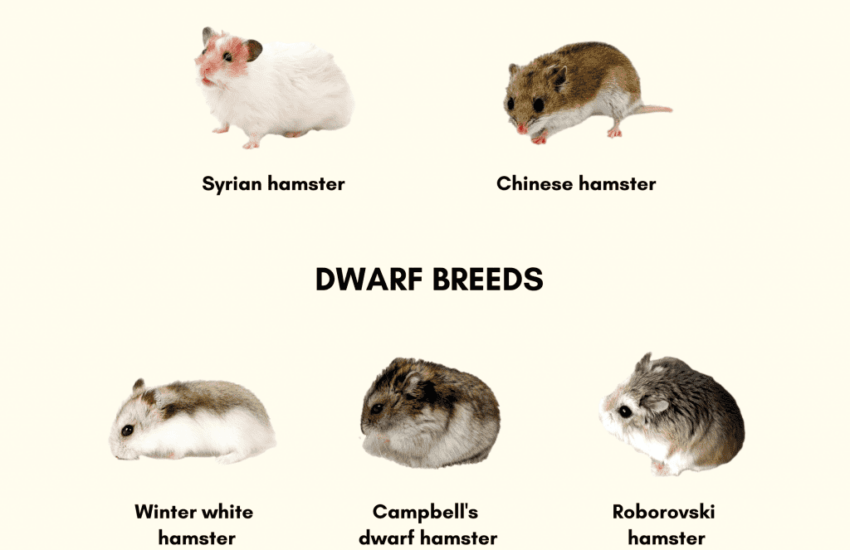Understanding Hamster Coat Varieties
When it comes to choosing a pet hamster, many factors come into play, and one of the most charming features is undoubtedly their coat. Hamster coat varieties vary significantly across different breeds, showcasing a spectrum of colors, patterns, and textures. This article unveils the stunning world of hamster coat varieties, helping you better appreciate these delightful creatures and perhaps even guide your next pet choice.
Diverse Colors of Hamster Coats
Hamsters are found in an impressive array of colors, from the classical golden shades to exotic patterns. The primary color types typically include a variety of browns, creams, whites, and blacks. Notably, some hybrids present unique combinations and shades.
Standard Colors
Standard colors refer to the universal hues found in many hamster breeds. For instance, the Golden hamster often displays a beautiful golden-brown coat that is complemented by a lighter underbelly. Sandy hamsters usually possess light cream coloring with minimal shading. The White Roborovski is a great example of a hamster that showcases a delightful white coat, often with a touch of peach coloration around the ears.

Rare Colorations
Some hamster breeds may display rare colors that are a result of selective breeding. For example, the Black Bear hamster exhibits a stunning all-black coat that is quite striking. Similarly, the Cream or Cinnamon hamster varieties offer subtle variations in shade that provide an appealing alternative for pet owners seeking something unique.
Patterns and Markings
Beyond colors, hamster coats also exhibit fascinating patterns and markings. This can include banding, spots, or masks that add a layer of interest and uniqueness to each pet. These patterns can be both pleasing and astounding, making them a favored choice for enthusiasts.
Common Patterns
The most common hamster patterns include markings like the agouti or dominant spot. The agouti pattern produces hair with bands of color that give a speckled appearance. On the other hand, the dominant spot formation involves streaks or patches of a specific color over a lighter base, creating a contrast that’s visually captivating.
Rare Patterns
Some hamsters can display surprisingly rare patterns that capture the attention of breeders and enthusiasts alike. Take, for instance, the “honey banded” that exhibits successive bands of color on the fur. The Pinto pattern, characterized by large patches of white, places an exciting twist on traditional coat designs and delights many hamster lovers.
Coat Textures
Another essential factor influencing your choice is the texture of the hamster’s coat. Various hamster breeds can be categorized into three primary textures: short-haired, long-haired, and coated varieties. Each texture brings charm and requirements in terms of grooming and care.
Short-Haired Hamsters
Short-haired hamsters, such as the Syrian or Campbell’s dwarf hamster, usually exhibit smooth and sleek coats. Their maintainability is straightforward, requiring minimal grooming. Runs and cage cleanliness become more crucial as excessive dirt can wear down the easy-care factor of their coats.
Long-Haired Hamsters
By contrast, long-haired varieties like the fancy hamster demand a little more attention and love. The silky fur of these hamsters can reach substantial lengths and often becomes tangled. Regular brushing is necessary to prevent knots and maintain their beautiful appearance. Despite the extra care required, many enthusiasts treasure their long-haired hampies for their whimsical look and cuddle factor.
Caring for Different Hamster Coat Varieties
Understanding hamster coat varieties not only enhances your appreciation for these cuddly pets but also informs their care. Different coat types require unique approaches to grooming and maintenance, ensuring their coats stay healthy and appealing.
General Grooming Tips
Regardless of coat type, it’s essential to learn some grooming basics. For short-haired breeds, weeklies brushing may be sufficient in replacement of baths, which can cause stress and skin irritation. On the other hand, long-haired hamsters need daily care to avoid fur matting. This routine ensures your hamster feels comfortable and maintains a fabulous appearance for years to come.
Cage Cleaning and Care
A clean cage leads to healthier hamster fur regardless of coat type. Ensure to replace bedding regularly, as filthy surroundings can lead to skin irritations affecting coat quality. Consider adding a digging area filled with safe substrates, increasing enrichment which a hamster will appreciate while curtailing stress.
Conclusion
In conclusion, understanding hamper coat varieties enhances both your experience as a hamster owner and the health of your beloved pet. Whether you gravitate towards the golden sheen of a Syrian or the inviting fluff of a long-haired breed, each comes with its own beauty and charm. As you explore the varied realm of hamsters, remember their individual needs and characteristics that ultimately contribute to a fulfilling life—both for them and you.
FAQ
1. What are the most common hamster coat colors?
The most common hamster coat colors include golden, cream, brown, black, and a combination thereof. Many enthusiasts also appreciate banded and spotted variations, making certain colors a favorite among buyers and breeders alike.
2. How can I tell if my hamster is a long-haired breed?
Long-haired hamsters typically have fur that extends beyond an inch long, dramatically differing from the sleekness of standard short-haired breeds. Siberian or fancy hamsters are well-known for their long, luxurious coats, which require regular grooming.
3. Do hamster coats vary significantly between breeds?
Yes, hamster coats vary dramatically between breeds, both in texture and appearance. Assessing your desired hamster breed can help you choose a coat type that fits your grooming capability and personal preference.
4. How often should I groom my long-haired hamster?
Long-haired hamsters should be groomed every day to prevent tangles and eruptions. Regular brushings not only help in maintaining their coat’s look but also establish a bond between the pet and owner.
5. Are there any health concerns associated with certain hamster coat types?
Certain coat types may be prone to specific health issues. For example, long-haired hamsters can experience more tangling or matting issues, leading to skin irritation. Moreover, differences in coat type may affect their vulnerability to the elements, reinforcing the importance of upkeep and attention to specific needs.
